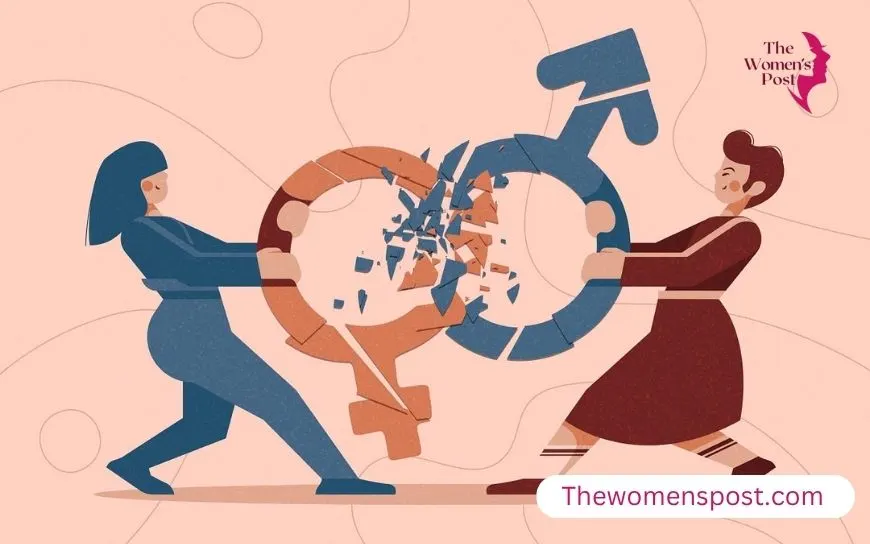How To Overcome Procrastination: Unique Strategies For Women In Tech

Most professionals, regardless of their industry, face the challenge of procrastination; however, for women in tech, this challenge can be even more difficult to deal with because of the unique pressures they face. A high level of work pressure together with imposter syndrome and the need to prove oneself in a male-dominated field creates a perfect storm for delayed tasks. Understanding why women in tech procrastinate and learning practical strategies to overcome this habit is at the very heart of how women in tech can overcome procrastination and stay productive.
Understanding Why Women in Tech Procrastinate
Procrastination is often an issue in the case of women in technology, with origins other than due to laziness or poor time management. Indeed, many women in tech report feeling the pressure of perfectionism, such that they don’t begin their work because it will never be good enough. More often than not, this perfectionist tendency is traced to the pressure to perform at exceptionally high levels in order to earn respect and recognition in a field where women are underrepresented.
Second, female professionals in the technology field may feel impostor syndrome—the continuous belief of not deserving a position given evidence to the contrary. The self-doubt freezes decision-making and leads to procrastination by women in hopes that with time, they will somehow feel more confident or prepared. For some, it’s also driven by the fear of making mistakes in front of colleagues—mostly in male-dominated teams—and so avoidance becomes a protective mechanism.
Work-life balance challenges further exacerbate these issues. Many women in technology have to balance their professional demands with societal expectations of caregiving and running the home, which leads to mental exhaustion. When your energy is spent, you would much rather procrastinate than push through projects that feel dauntingly difficult. For most women in tech, knowing how to keep themselves focused and motivated involves having visibility on these pressures.
Projects Broken Down into Smaller, Manageable Tasks

Also Read: Key Steps For Women In Tech To Successfully Transition Into Leadership Roles
Breaking up huge and overwhelming projects into smaller and less overwhelming tasks is one of the most effective ways of winning the battle with procrastination. What uniquely works for female programmers includes pinpointing the core elements of a project and creating a well-detailed checklist of what needs to be done to accomplish the task. Instead of having to build an entire feature in a software application, for instance, a developer would break this down into designing the interface, writing the backend code, and testing individual components of that feature.
This is particularly helpful for women who deal with perfectionism. The smaller and more specific the tasks are, the more manageable they seem, and the less likely to be hampered by the perfectionist voice that says, “It won’t be perfect anyway, so why start?” Completing small tasks also grants immediate wins, boosting confidence and motivation for the next task. These are productivity tips to help women in technology manage time effectively.
Strategy 2: Establish Realistic Deadlines and Accountability Systems
Women in technology should set realistic deadlines for their work and share these commitments with accountability partners. Instead of the vague goals like “finish the project eventually,” making precise deadlines makes the task feel more urgent and concrete. Sharing such deadlines with a trusted colleague, mentor, or friend increases the possibility of following through because there is an element of external commitment present.
Accountability doesn’t have to be formal. Women in tech may establish peer groups wherein members share weekly goals and progress from the same. Not only does such a strategy keep one from procrastinating, but it also builds a supportive community of women who can talk over challenges and win together. Many women often feel that knowing someone is checking in on their progress motivates them to stay on track and reinforces effective ways for women in tech to maintain focus and motivation.
Strategy 3: Uncover the Root Cause of Self-Doubt
Overcoming procrastination for women in tech often denotes deeper issues such as imposter syndrome and perfectionism. Reframing negative self-talk in a more balanced, realistic way is one of the effective techniques. When a woman thinks “I’m not qualified to lead this project,” she can challenge this by reminding herself of past successes and specific evidence of her competence.
Keeping a file of positive feedback, accomplishments, and successful projects can be a powerful tool during those moments of doubt. In procrastination that just seems to be overwhelming, the review of this collection of one’s achievements helps women reconnect with their actual abilities, not perceived inadequacies. Among the unique strategies that help beat procrastination for female programmers, and find out how women in tech can overcome procrastination and stay productive, are the following.
Strategy 4: Set Up a Distraction-Free Work Environment

Also Read: How Is AI Helping With Mental Health Solutions For Women
The physical and digital environment plays a great role in one’s focusing and not being a procrastinator. Women in tech should audit their workspace and eliminate unnecessary distractions. This can include turning notification sounds off, using website blockers to avoid mindless browsing, or finding a quieter place to work during crucial project phases.
Many female technopreneurs feel more productive by adopting the Pomodoro Technique of working for focused, uninterrupted periods of 25 minutes, followed by small breaks to stretch and refresh. For this group of technopreneurs, structured work keeps them from burning out and makes it easier to stay focused. Accomplish one task at a time in a Pomodoro session, and it will create momentum and reduce procrastination. These are simple yet effective ways for women in tech to maintain focus and motivation.
Strategy 5: Practice Self-Compassion over Perfectionism
A very important shift for women in tech to make is moving from a perfectionist mindset to a self-compassionate one. For most women, perfectionism creates great fuel for procrastination because they wait for the perfect moment, the perfect plan, or the perfect state of mind to start something. Self-compassion means understanding that everyone makes mistakes and often, good enough is indeed good enough.
Self-compassion allows women in tech to talk to themselves in the way they would talk to a friend who is trying their best. Instead of internal self-flagellation, perhaps they could have a compassionate response: “I’m working on a challenging problem, and it’s normal to need time to think through this.” This more gentle approach reduces anxiety and actually makes it easier to start difficult tasks—one of the unique strategies to beat procrastination for female programmers.
Strategy 6: Align Tasks with Personal Values and Strengths

Also Read: Women Leading The Way In Green Computing And Sustainable Tech Solutions In Tech Design
The sad reality is that procrastination really often becomes heavy when the female professionals in technology either feel disconnected from their work or are forced to do things that don’t play to their strengths. In general, whenever possible, women should look for opportunities to work on projects of genuine interest or utilizing their strongest skills. When work feels meaningful and plays to personal strengths, motivation naturally increases while procrastination decreases.
If women find themselves procrastinating on certain kinds of tasks, it may be time to evaluate whether those tasks are really aligned with their values and skills. Sometimes, procrastination is a signal that something needs to change, from finding a new role to developing new skills or delegating certain responsibilities to teammates with different strengths. These are productivity tips that will help women in technology manage time effectively.
Strategy 7: Create a Supportive Community
Finally, women in tech should make conscious efforts to build and maintain a supportive network of mentors, peers, and allies. Having people who understand the unique challenges of being a woman in tech can encourage, advise, and give perspective when procrastination strikes. These connections create avenues to learn about strategies from other women on how to overcome similar obstacles.
Online and in-person women in tech communities are invaluable resources for overcoming procrastination and its contributory factors. Sharing experiences with others who experience similar pressures normalizes struggles and reduces the isolation that contributes to procrastination and self-doubt. This is central to how women in tech can overcome procrastination and be productive.
Conclusive Remarks
To overcome procrastination as a woman in tech, one must understand the special pressures and challenges that create this habit. Breaking projects into smaller tasks, setting realistic deadlines, fighting self-doubt, creating focused work environments, showing self-compassion, aligning work with personal values, and building a supportive community are all ways in which women in tech can develop practical strategies to enhance their productivity and career satisfaction. It is an ongoing process to learn how women in tech can overcome procrastination and remain productive, but far more achievable with these productivity tips to help women manage time effectively in technology and unique strategies to beat procrastination for female programmers. Recognizing that procrastination is not a failing but often a symptom of unrealistic expectations or unsupportive environments can help women move forward with confidence.









